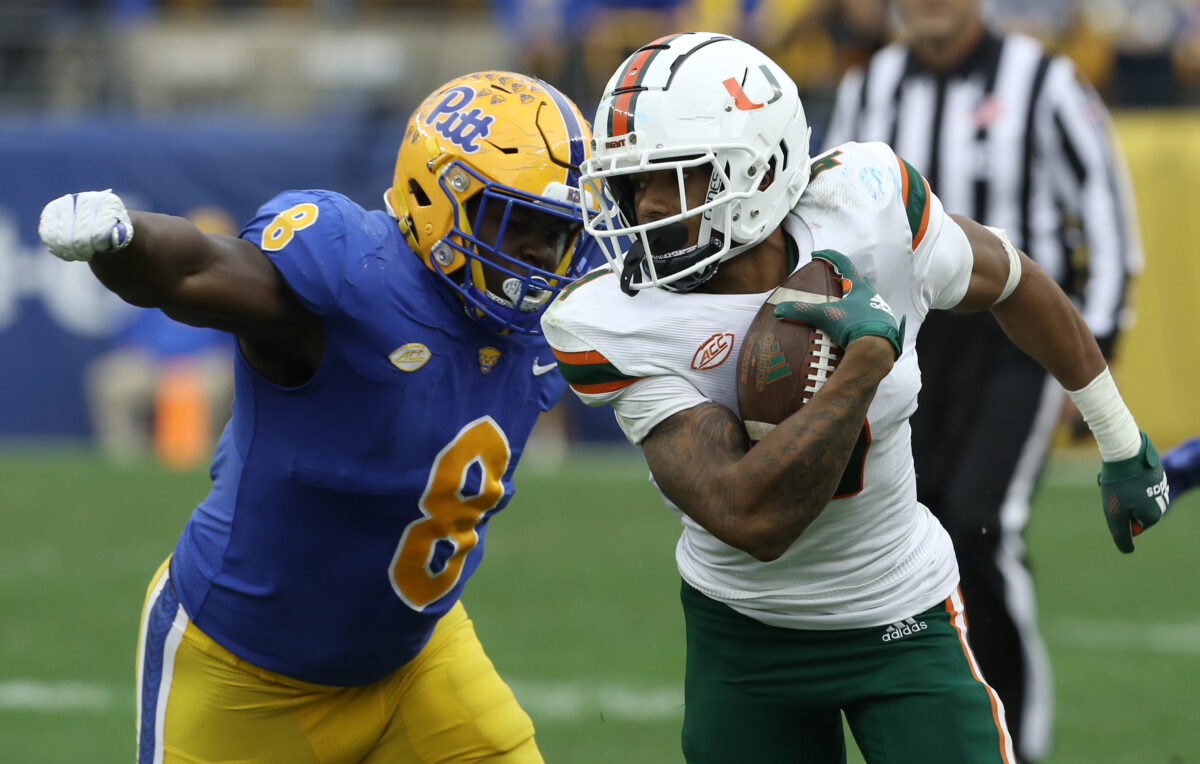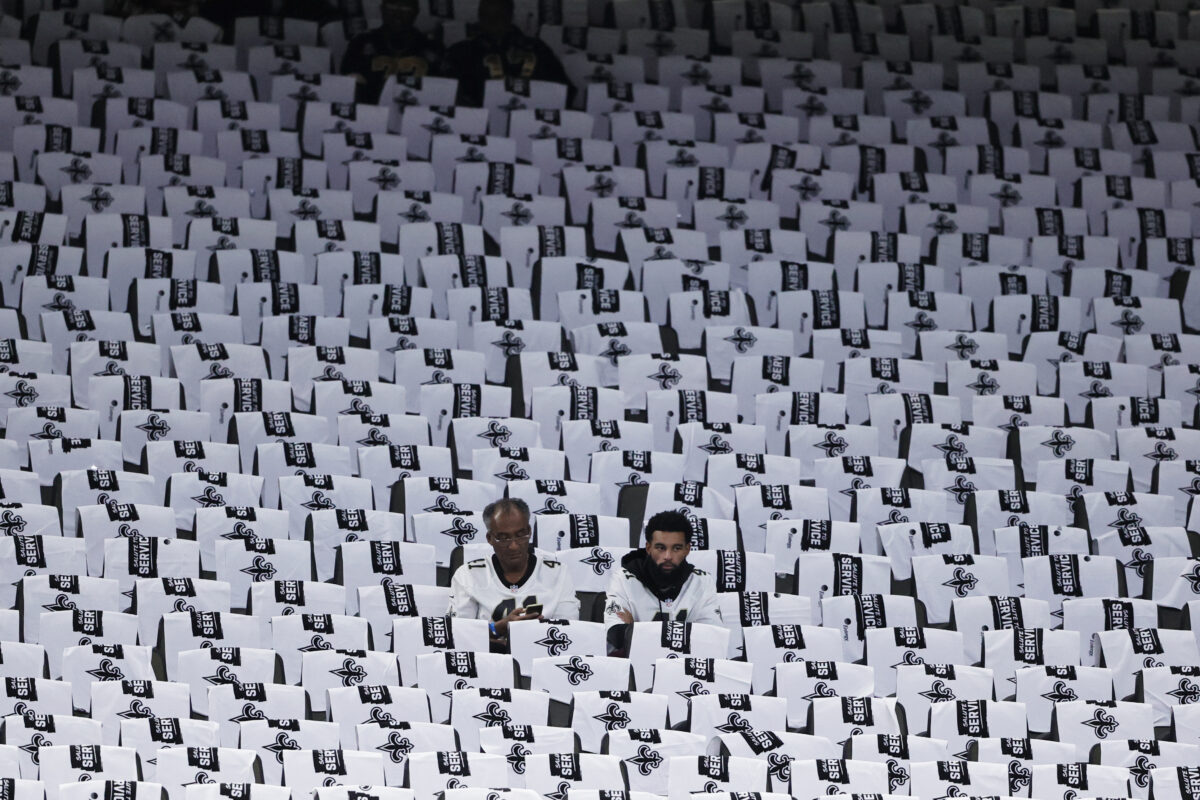How many mock draft writers does it take to figure out what the New Orleans Saints are going to do in April’s 2023 NFL draft? The Athletic’s Diante Lee and Nate Tice collaborated on a first-round mock draft, which brought an unconventional (if wise) pick to the Saints in Pitt Panthers defensive tackle Calijah Kancey. Tice wrote of the match:
The Saints could go in several directions with this pick. But with several interior defensive linemen leaving in free agency, they need reinforcements. Enter the undersized but disruptive Kancey. Kancey is a different type of player than what the Saints have trotted out up front in recent years, but his gap-shooting style will fit perfectly in Dennis Allen’s preferred four-down fronts.
Kancey is a heck of player — he bagged 34.5 tackles for loss and 16 sacks for Pitt, with Pro Football Focus charting crediting him with 111 pressures over three years and 33 games. He’s very disruptive up front and beats opponents with a lightning-fast first step much like Sheldon Rankins once did in New Orleans.
But he’s undersized by the Saints’ strict standards at 6-foot-1 and just 281 pounds, with 30.625-inch arms. Here’s how that compares to some other Saints defensive tackles (past and present) coming out of college:
- Khalen Saunders: 6-foot-0, 324 pounds, 32.25-inch arms
- Nathan Shepherd: 6-foot-3, 315 pounds, 32.375-inch arms
- Albert Huggins: 6-foot-2, 305 pounds, 33.5-inch arms
- David Onyemata: 6-foot-3, 300 pounds, 33.25-inch arms
- Malcolm Roach: 6-foot-2, 297 pounds, 31.875-inch arms
- Prince Emili: 6-foot-0, 295 pounds, 32.625-inch arms
- Shy Tuttle: 6-foot-2, 290 pounds, 33.375-inch arms
- Kentavius Street: 6-foot-2, 280 pounds, 32.875-inch arms
That’s an average size of 6-foot-1.75 and 300.75 pounds, with arms of 32.75 inches — none of which are standards Kancey makes. The Saints have shown us that they’ll make exceptions for players in the right situation, as with Street, but he played on a veteran’s minimum salary last year. Committing a first round draft pick to Kancey might not be a risk that Dennis Allen is willing to take.
The Saints head coach has spoken often about a desire to want to “play a big man’s game” in the trenches by emphasizing size and length, which aren’t qualities Kancey brings to the table. He might reach the threshold for height or weight, but his comparatively-short arms could be a deal-breaker when taken with those other physical shortcomings.
But, hey: he’s a special talent with rare athletic gifts, able to knife past blockers before they can react and chase down runners in the open field. Maybe Kancey shows the Saints enough in the weeks ahead to convince Allen to make a mold-breaking selection in the first round while addressing his team’s top draft need. Stranger things have happened, right?
[lawrence-auto-related count=3]
[stnvideo key=”ugRL03u2JJ-2646782-7618″ type=”float”]









